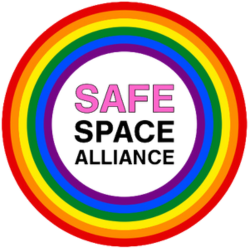 Many parents do not know how to respond when they learn that their child identifies as lesbian, gay, bisexual, transgender, queer, or any sexual orientation other than heterosexual and any gender identity other than cisgender (a person whose sense of personal identity and gender corresponds with their birth sex). For the sake of simplicity, these sexual orientations and gender identities are lumped together with the acronym LGBTQ. Because many parents struggle with how to best help their LGBTQ child, I’ve outlined some places to start.
Many parents do not know how to respond when they learn that their child identifies as lesbian, gay, bisexual, transgender, queer, or any sexual orientation other than heterosexual and any gender identity other than cisgender (a person whose sense of personal identity and gender corresponds with their birth sex). For the sake of simplicity, these sexual orientations and gender identities are lumped together with the acronym LGBTQ. Because many parents struggle with how to best help their LGBTQ child, I’ve outlined some places to start.
First of all, just as all children are different, all LGBTQ children are also different from one another, so there is no one-sized-fits-all answer to the question of how to help your child. Therefore it’s best to start by asking your child how you can help, or what they would like you to understand about their sexual orientation or gender identity. If they’re struggling to find the words, offer love and empathy to help them feel comfortable sharing. Telling them that you understand how hard this must be for them, and that it’s okay to not have all the answers, will help them open up and share what they can. It also never hurts to directly tell your child that you love them unconditionally, because many kids and teens fear that their parents will not love them or will disown them once they come out.
It is helpful for you as a parent to understand the terminology, and to know which terms are offensive, such as the word “homosexual,” due to its derogatory use throughout history. A helpful resource for this is GLAAD’s Media Reference Guide, which explains which terms are preferred and defines many of the terms you may hear your child use.
The most important thing you can do as a parent is to respect and validate whatever your child tells you. Many parents suspect that their child is going through a phase or is coming out to get attention. Whether this is the case or not, it is never helpful to say this to your child because this dismisses their experience and will make them either stop telling you things or fight harder to get you to believe them. Often children and teens do not fit the stereotype of how you think a gay, lesbian, or transgender person should look or act, or they frequently try on different identities during their struggles to figure out who they are. No matter what, your child needs to know that you see them for who they say they are, because only they know their true identity. As parents this can be incredibly hard to do, especially if your religious beliefs conflict with their orientation or identity. However, if you do not accept your child for who they are, you will likely lose them, either emotionally by them distancing themselves from you, or physically by them leaving home or committing suicide.
Children and teens who identify as LGBTQ and have parents who are not supportive are much more likely to experience anxiety, depression, and suicide. As hard as it is to accept that your child’s sexual orientation or gender identity is not what you thought it was, it is usually exponentially harder for your child. Remember that they did not choose this, and they have likely struggled with this for a long time before gathering up the courage to tell you. If they seem happy or proud of their identity, then be proud of them for the hard work they’ve gone through to get to that place.
Accepting and affirming your child’s identity includes using the pronouns that align with how they identify and using their chosen name, and allowing them to change these if their identity changes. It is common to have fluctuations in gender identity and sexual orientation. This can be confusing to parents and lead to more disbelief in their child’s identity. Sexual orientation and gender identity exist on a continuum like most other things in life, so most people, even those who identify as heterosexual or cisgender, do not neatly fit 100-percent in one category or another. As parents you can help your child by meeting them wherever they are at any given moment, and letting them know that however they feel and identify is okay.
Because this is not easy, many parents with an LGBTQ child find it helpful to get support, either from a support group, a therapist, or a trusted friend or family member. Some places to start as far as support groups and other resources are PFLAG and TransParent USA. At The Center for Mindfulness & CBT, all of our therapists are knowledgeable and affirming of LGBTQ people and their families, and will meet you where you are with this. If you are unsure where to start, contact one of us to help get started on your journey of understanding and accepting your child.


